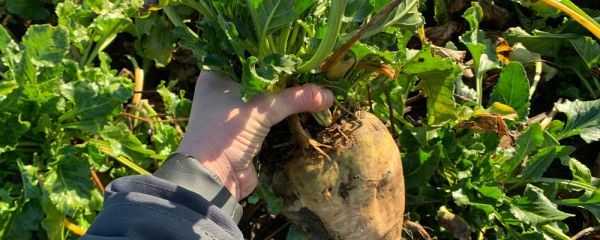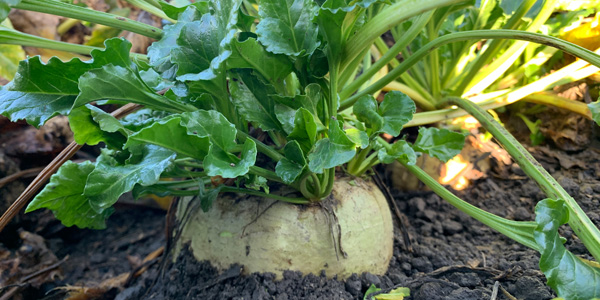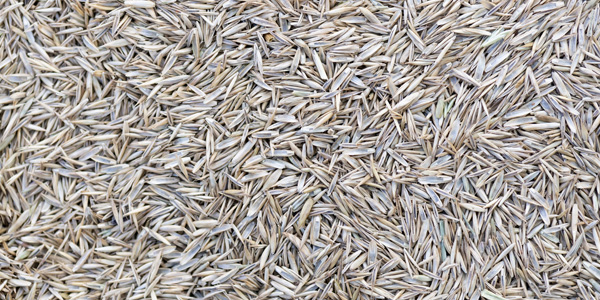
Fodder Beet 'Bolters'
Fodder Beet 'Bolters'
Fodder Beet 'Bolters' and Crop Sustainablity
‘Bolters’ are plants within a fodder beet forage crop that go to seed through the summer and early autumn. The seed from these seeding beets can stay viable in the ground for a number of years. Bolters can be found for various reasons. All cultivated beet varieties have been selected from populations of wild beet, which in its natural habitat is a relatively free seeding species. Domestication of this species has seen intensive breeding effort put into minimising this free seeding habit from useful beet types.
Many people are aware that a small number of bolters are typical in a fodder beet crop and cultivars that are clean one year may have some bolters the next, such is the nature of pollen transfer and weed beet presence in seed production environments. Leaving or ignoring paddocks with bolting plants, no matter how few, is the single biggest risk to the sustainability of fodder beet in New Zealand.
For the last few years the true effect of bolters has been overlooked by many in the sector and their relevancy underestimated. Therefore, the prevalence of volunteer beet plants has risen on many support blocks to significant levels. In some severe cases it will prevent future fodder beet plantings.
Bolters and weed beet building up in our soils is also a major risk to high value red beet and silver beet seed crops within the arable sector. In addition it limits the potential of growing clean, non-contaminated fodder beet seed crops in New Zealand.
If bolting plants are not destroyed before they complete their life cycle they can produce up to 6,000 seeds per plant, with this seed remaining viable over several years. Consequently, once established, bolter populations can persist in the seed bank for up to 10 years.
Some growers are ignoring best practice and opting for ‘beet on beet’ instead of a crop rotation. This practice requires even more active monitoring of bolting beets with immediate removal of these plants from the paddocks. Beet following beet has the additional issue of bolters, generated by leftover bulbs or bulb chips from the previous crop. If all or part of these bulbs remain in the ground with a viable root system, these plants (being over 12 months old) will naturally go to seed through their second summer.
When considering next year’s spring crops, time must be taken to plan rotations which will support long term fodder beet production. In many cases a 4+ year rotation is advised and if the rotation length is shorter between crops, extra resources must be accounted for in the roguing of bolters. It is also important to be aware of the potential for bolters to emerge in a paddock going into fodder beet that has previously grown beet at any stage in the past – especially in the past 10 years. Above all else it’s critical to the future of the crop that all bolting plants are completely removed from paddocks.
Image: Weed beet pollen contaimination (left) vs cultivar bolter (right)
TYPES OF BOLTING BEET IN FODDER BEET CROPS INCLUDE
Weed type contamination within the seed production
Plants with little to no bulb, that goes straight to stem and seedhead development often with little leaf production (see photo above).
Cultivar bolters
have a bulb and are often very leafy and quite large plants. This can be associated with the age of the cultivar and in some cases the sources of genetics (e.g. breeding for Rhizoctonia tolerance can lead to a slightly higher cultivar bolter frequency due to the genetic source of the tolerance).
QUICK FACTS:
- Bolter weed beets are derived from wild beet populations and have a dormancy mechanism for survival
- Each individual bolter can produce up to 6,000 seeds which can stay in the soil for up to 10 years
- Having a crop rotation with beet following beet is very risky and increases the chances of weed beet build up as well as the introduction of crop limiting diseases and pests
- If bolting beets are not completely removed from paddocks, (i.e. the bulb and seed head) they can regrow and still produce viable seeds
- While it’s typical to get a few bolters coming through withinfodder beet crops, growers need to be aware of the commitmentand requirement to completely remove these plants ensuringthat fodder beet can be grown sustainably in the future

Our Fodder Beet range
VIEW PRODUCTS



